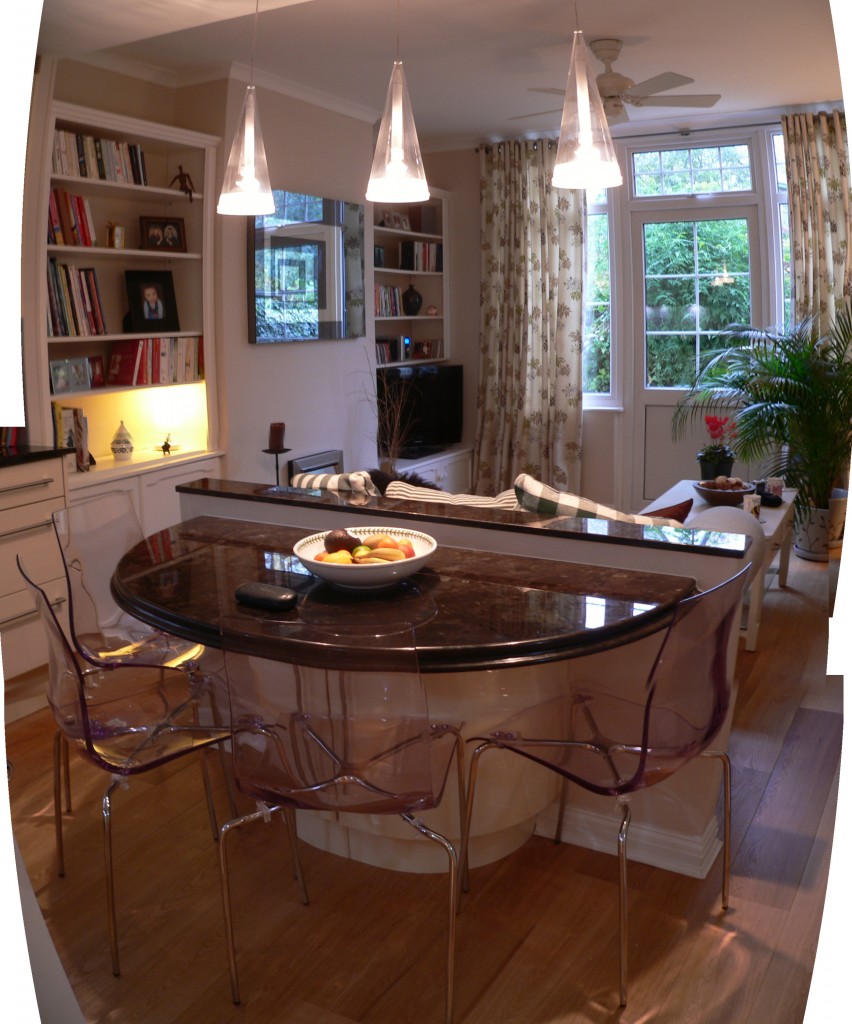
When You Don’t Need Planning
Extensions
An addition or extension to your house is generally considered to be permitted development. Different rules apply to flats and maisonettes, which if you are extending, you will require PP. If your house is in Conservation Area or is a listed building, chances are there may be restrictions specific to your area or property, and therefore you may require PP.
These count as permitted development:
- Your extension is no more than half the area of land around the original house (curtilage). The “original house” is seen as it was in 1948; after this date how it was newly built
- Your extension is not forward of the principal elevation or side elevation onto a highway
- Your extension is not higher than the highest part of the roof
- In the case of single storey extensions, it must not extend beyond the rear wall of the original house by more than three metres if an attached house or by four metres if a detached house
- The maximum height of your single-storey rear extension is not higher than four metres
- Extensions of more than one storey do not extend beyond the rear wall of the original house by more than three metres
- Side extensions are single storey with maximum height of four metres and width no more than half that of the original house
- Two-storey extensions are no closer than seven metres to rear boundary
- The materials are similar in appearance to the existing house
- Your extension does not include verandas, balconies or raised platforms
- Any upper-floor, side-facing windows are obscure-glazed; any opening is 1.7m above the floor
Conservatories are categorised as the same as any other extension, as set out above.
Garages, sheds and other outbuildings
Outbuildings such as sheds, greenhouses, garages and some other structures are also considered to be permitted development. You can build a garage or outbuilding on your property without planning permission as long as the height is no more than 4 metres. Outbuildings cannot take up more than half of the land around the original property. There are as always exceptions where planning permission is necessary so contact your Local Planning Authority or visit the Planning Portal for further details of planning exemptions for outbuildings.
Paving over the front garden
As long as the material you are using is porous there is no need for planning permission whatever the size of the new hardstanding. If the material is impermeable, anything over 5 square metres requires planning permission.
Windows and doors
There is no need for planning permission to repair or replace windows and doors unless the property is listed in which case you will have to obtain listed building consent which means UPVC windows are a no-no.
External walls and roof
For minor maintenance works, or improvements such as painting your house or inserting a skylight, you do not need planning permission. As always this is not the case if your building is listed. If you live in a conservation area or an area of outstanding natural beauty, you are required to obtain planning permission if the external appearance will be changed. If you live in a flat and you wish to alter the roof you have to consult the local planning authority because it is often but not always the case that PP is not required.
Wind turbines and solar panels
Temporary wind turbines do not require planning permission but permanent ones usually do. Solar panels do not require planning permission unless you live in a listed property.
Fences, gates, and walls
Planning permission is not required unless:
- Next to a road and over 1 metre high
- Over 2 metres and not next to a road
- If your house is listed
- If it forms a boundary with a listed building
Trees and hedges
- Many trees are protected by tree preservation orders and you will need permission to prune them. You can phone your council to check if any trees on your land are protected.
- Similarly permission is required for work done to any trees in conservation areas. To find out if a tree on your property is protected contact your local council.
- Hedges can be any height (within reason, to avoid being a nuisance to others).
Indoors
Internal works such as loft conversions, garage conversions, new staircases, bathrooms, kitchens, or rewiring, do not require planning permission, unless it is a listed property or in a Conservation area.
If you enjoyed this article, please share. As usual I would love to hear from you. All comment and feedback welcome.
Written by Ivy Ngeow B.Arch (Hons) MA RIBA © 2019 All rights reserved
Tweet me @ivyngeow
#womeninarchitecture #thepracticeblog


